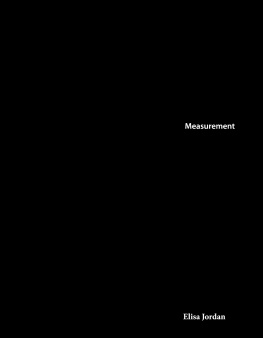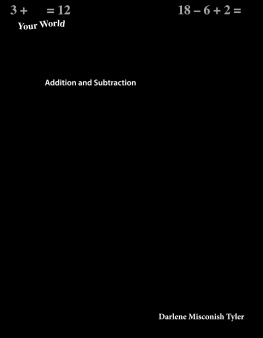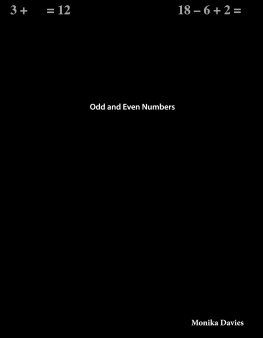0covercover.xhtmlArt and Culture Exploring Mexican Artifacts Measurement Elisa Jordancover1page0001page0001.xhtml22page0002page0002.xhtml33page0003page0003.xhtml44page0004page0004.xhtmlTable of Contents Tradition and Culture 4 Tools 8 Pottery 12 Musical Instruments 16 Ornaments 18 Traditions Today 26 Problem Solving 28 Glossary 30 Index 31 Answer Key 3255page0005page0005.xhtmlTradition and Culture Mexico is a country with a strong sense of tradition and culture. The nation's history dates back prior to the arrival of Christopher Columbus in the Americas. The Olmec people were the first to live in Mexico. They lived near the Gulf of Mexico in the region that now makes up the states of Veracruz and Tabasco. The Olmec people can be traced back about 2, 500 years. They are remembered for the giant head sculptures they carved out of stone. The Zapotec, Maya, Aztec, and Toltec were other early cultures in the country. In some ways, the people lived a lot like people today. They had large cities. They used writing systems and calendars. They built temples and schools. They had systems for farming and government. Things changed after Columbus arrived in the Americas in 1492. Europeans wanted to explore the land. Hernn Corts, a Spanish explorer, sailed from Spain nearly 30 years after Columbus. After Corts, more people came from Spain. Cultures continued to mix in this region. Spanish culture started to influence the culture in Mexico. While some of the old buildings remained, Spaniards began to build new structures. They also introduced different ways of making tools, clothing, and food. They taught people to speak Spanish, too. Mexico Veracruz Tabasco66page0006page0006.xhtmlOlmec giant head Maya fortress in Tulum, Mexico77page0007page0007.xhtmlTourists explore a Maya step pyramid that was built for holding rituals. This Maya warrior vase is thought to be from around AD 600-1000.88page0008page0008.xhtmlThe Olmec, Zapotec, Maya, Aztec, and Toltec people left behind many artifacts that have helped people learn about their lives. Artifacts are objects made by humans. They give clues about the past. They may include buildings, tools, sculptures, pottery, and clothing. Artifacts help us understand how people cooked meals and where they lived. Some objects give information about how governments worked. Other objects tell about the things people liked to do for fun. Artifacts link us to past cultures and people. This is important for many reasons. We can learn that we are not much different from our ancestors. They did many of the same things we do today. We can also learn that the way they did things can affect how we do things now. Many of these traditions have been handed down over the years. Understanding how a tradition began helps to keep traditions alive. Mexico's past has shaped the present. The Spaniards arrived in Mexico in the 1500s. They brought and spread the Spanish language throughout the region. Today, people in Mexico still speak Spanish. People also use many of the same tools that were used back then. The Toltec warriors standing in the city of Tyla are a symbol of battle.99page0009page0009.xhtmlTools Humans have been using tools for millions of years. Tools are objects that can help people do things like eat, cook, build, or make music. People in ancient Mexico used many tools that are still part of the culture today. Metate During pre-Columbian times, stone tools called metates (meh-TAH-tays) were used to grind plants, seeds, corn, and nuts. Metates are made of two individual pieces. The large piece is called a grinding stone. This rectangular slab, with a slight incline on one end, is where food is placed. The grinding stone usually starts as a flat surface, but, over time, the flat surface becomes bowl-shaped. The smaller stone is called a mano (MAH-noh). Mano is the Spanish word for hand. The mano is moved by hand, in a back and forth motion, over the food on the grinding stone. This tool was an important part of daily life. Women woke early to make food for their families. They would most likely have spent a great deal of time kneeling over a metate grinding corn. People still use metates today. Most modern metates have three short legs to keep the tools stable during the grinding process. Metates are used to make homemade tortillas, chocolate, and fresh salsa.1010page0010page0010.xhtmlA woman finishes grinding corn with a metate. metates LET'S EXPLORE MATH Metates are made in different sizes. Small metates are used to grind spices, medium metates are used to grind corn, and large metates are used to grind chocolate and coffee. Match each measurement to the metate it describes and answer the following question : are the metates longer than they are wide or wider than they are long? Explain how you know. Lengths : 1 12 feet; 10 inches; 1 foot, 10 inches Widths : 16 12 inches; 8 inches; 1 foot Size of Metate small medium large Length Width1111page0011page0011.xhtmlMolcajete Molcajetes (MOHL-cah-heh-tays) are three-legged bowls. They date back thousands of years. Many ancient people used them, including the Maya and Aztecs. In fact, the molcajete is one of the world's oldest kitchen tools! Like metates, they are used to grind foods. Both tools are still used to make salsa and guacamole. A molcajete has two pieces. It has a large stone bowl and a handheld grinding stone. The grinding stone is called a tejolote (TAY-ho-loh-tay). The tejolote is used to pound food in the bowl. The three legs keep it stable while food is ground. Ancient Aztec and Maya molcajetes were carved out of basalt. This volcanic rock was soft enough to shape and carve. Craftsmen, or skilled workers, used the pecking method to repeatedly "peck" at the basalt stone. This motion eventually shaped the stones into bowls. Some artists formed the bowls into animal shapes, such as pigs and bulls. Modern molcajetes are made from many kinds of stone including basalt. Molcajetes are still popular in homes and restaurants. Molcajetes can be used as serving dishes because their stone surfaces stay warm for a long time. That feature makes them perfect for using at parties! molcajete1212page0012page0012.xhtmlLET'S EXPLORE MATH A molcajete must be seasoned, or prepared, before it is ready to use. This process has several steps requiring different amounts of time : Step 1 : Soak in water for 12 hours. Step 2 : Dry for 2 days. Step 3 : Grind rice with water and dry for 12 day. Step 4 : Grind blend of spices, let set, and dry for 14 hours. 1. How many total hours does it take to season a molcajete? 2. How many minutes does it take? 3. Does this process take 3 or 4 days? Explain your reasoning. A person grinds dried corn in a molcajete.1313page0013page0013.xhtmlPottery In the past, people used gourds as vessels to carry water and other liquids. When pre-Columbian people began to make pottery, they used a similar gourd-like shape. Eventually, they started making other shapes, too. Coil Method People used the coil method to make pots. For this method, people rolled clay into long pieces. Then, they pinched the clay coils. Families often made simple pots that were small. Craftsmen made bigger and more detailed pots. Once the pots were formed, they were placed on an open fire or in a fire pit. The fire hardened the clay, so the pots became strong enough to use for cooking, eating, and in ceremonies. The pots were useful for daily activities but were also works of art. People used minerals to make paints. They painted pots with designs and shapes. They painted animals and people. They also pressed objects into the clay to make designs. The objects imprinted both sides of a pot. People in each region of Mexico made their own styles of pottery. The different styles have helped historians determine where the pottery was made. An artist smooths a bowl made with the coil method.1414page0014page0014.xhtmlThis pottery from northern Mexico was made by a potter named Juan Quezada Celado. LET'S EXPLORE MATH Javier drinks water out of his clay mug 3 times a day. The mug holds 350 milliliters of liquid. Did Javier drink more than or less than 1 liter of water? Remember, 1, 000 milliliters = 1 liter.1515page0015page0015.xhtmlSpanish Tools and Methods Spanish settlers arrived in Mexico during the 1500s. They brought tools that helped make pottery. They shared their tools and techniques with the people of Mexico. The Spaniards used potter's wheels. A potter's wheel is a machine that helps shape pottery into a round form. This tool made it easier to make pottery. Spanish settlers also brought kilns to Mexico. A kiln is like an oven. Because it is enclosed, heat is more evenly distributed than an open fire. It's also easier to control the temperature. After a clay pot is formed, it is placed in a kiln to dry. The Spanish people brought glazes, too. Glazes, which are similar to paint, were used to add color and designs to the pottery after it dried in the kiln. Mexico quickly became part of a trade route after the Spanish settlers arrived. Ships sailed between countries and traded goods. These ships brought items from all over the world through Mexico. Mexico was between Spain and China on the trade route. Soon, pottery designs and colors started to reflect all three cultures. Pottery is still popular in Mexico. Today's Mexican pottery styles are a mixture of the pre-Columbian and Spanish cultures. The temperature rises in a fiery kiln.1616page0016page0016.xhtmlA potter uses a potter's wheel to mold a clay vase. LET'S EXPLORE MATH Karina makes her own pottery. She measures the height of each of her objects before she puts them into the kiln to make sure they'll fit. Pottery Heights 16 inches 6 12 inches 14 18 inches 5 78 inches 11 inches 18 12 inches 1. What is the total height of all the pottery? 2. If Karina wants to redistribute the clay equally so that each object is the same height, how tall will each object be?1717page0017page0017.xhtmlMusical Instruments Music has always been an important part of Mexican culture. The Aztec, Maya, and Tarascan people all loved music. They made and performed music for over 2, 000 years. Music was played to communicate with relatives and spirits. It was also used in celebration and in battle settings. At a young age, children learned to play instruments. Adults taught them many types of songs. They sang songs about good deeds, great leaders, and religion. These songs were used to celebrate special events. They also sang songs about having fun, love, and daily life. Musical instruments were an important part of the songs. Aztec, Maya, and Tarascan people made and played a few different types of drums. Ayotl (I-oht) were drums made from turtle shells. Hollow logs were used to make Teponaztli (tehp-oh-NAHS-tlee) drums. Huehuetl (OOEH-ooeht) were drums made from wood with animal skin stretched across the top. This drawing from about 1540 by a Spanish missionary shows his perception of Aztecs and their love of music.1818page0018page0018.xhtmlA rattle was another type of musical instrument. Rattles were originally made by filling gourds with pebbles or beads. Maracas are the modern version of the rattle. People in these ancient cultures also made trumpets from large shells called conches. Conches were blown to announce visitors to the area. They were used to track time. They were also used to signal the start of battle. Drums, maracas, and conches are still important parts of Mexican culture. The people of Mexico continue to celebrate life with music. A man blows a conch shell to honor an ancient cultural site in Mexico. LET'S EXPLORE MATH Teponaztli drums vary in length from 12 inches to 48 inches. Find the missing lengths of the drums in the table. What pattern do you notice? Remember, 12 inches = 1 foot.
Next page













